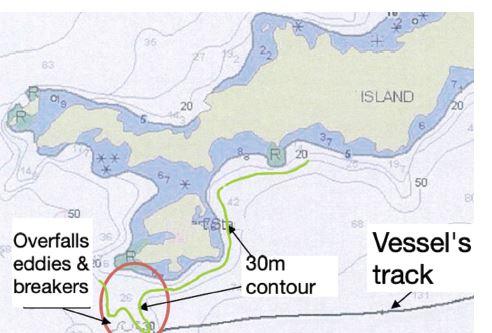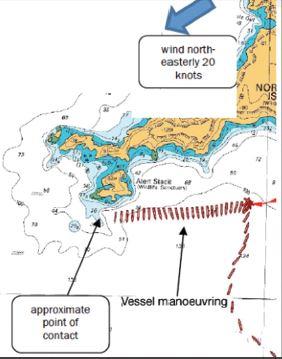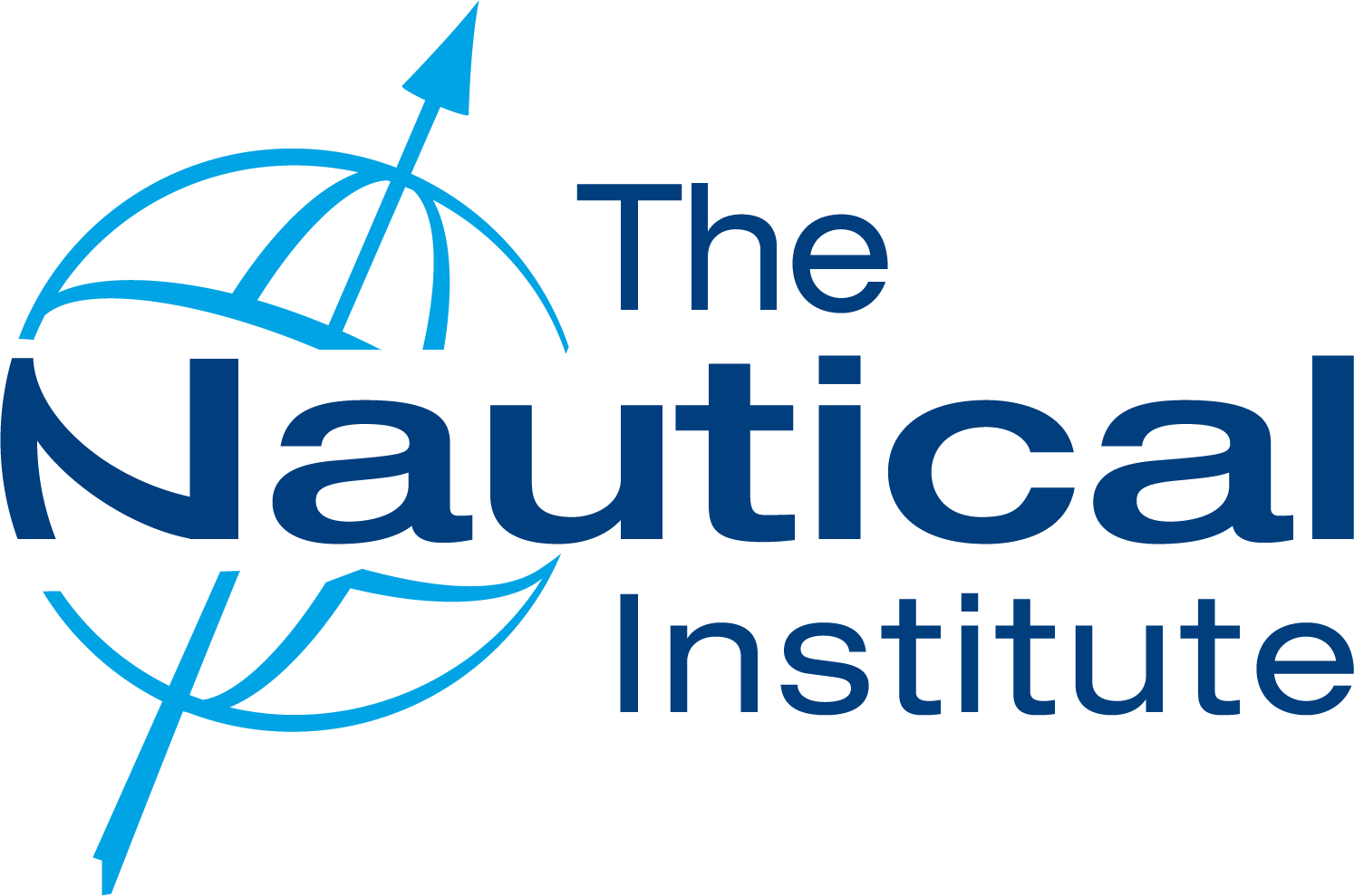201912 Poor BRM and low situational awareness equals a bad day
As edited from official TAIC (New Zealand) report MO-2017-201
An excursion passenger vessel arrived off an island where the passengers spent the morning making shoreline excursions in rigidhulled inflatable boats, observing the wildlife. The weather became unsuitable for small-boat excursions in the afternoon, so the boats were taken back on board.
An OOW was assisting the Master on the bridge and primarily using the vessel’s ECDIS to position the vessel and gain situational awareness. However, the Master and the navigation officer had come to no agreement about a plan, nor had they expressed to each other their expectations.
As a result, and despite the Master wanting to avoid an area identified with overfalls and eddies, no effort was made to establish a no-go zone. Additionally, the ECDIS shallow contour setting was at 6m, which would have rounded up to 10m on the ENC in use at the time of the accident. With this configuration, the shallow contour did not show, as it was effectively the same as the safety depth.
While the Master was focused on manoeuvring the ship to facilitate the safe recovery of the rigid-hulled inflatable boats and communicating with the operation taking place at the ship’s stern, the ship drifted very near the island and it struck an uncharted rock. The rock pierced the hull in an empty void tank, which flooded with water. The damaged compartment had little effect on the ship’s stability, and the ship was able to continue to another island before returning to port for temporary repairs. Nobody was injured.
Some of the findings of the official report were:
- The standard of bridge resource management on board the vessel did not meet good industry practice.
- The electronic chart display and information system was the primary means of navigation on board the vessel, yet the operating crew were not fully familiar with the capabilities and the limitations of the equipment and were not making best use of it.

Lessons learned
- Undoubtedly, some rocks and shoals remain uncharted. Coming close to shore in areas where hydrographic information is sparse can be a risky proposition.
- If the shallow contour parameter had been set to 30m, the ECDIS would have displayed a warning or alarmed when the vessel was predicted to cross the 30m contour, thus giving better situational awareness.
- Every part of a ship’s voyage must be planned, and all members of the bridge team must be fully familiar with the plan and agree to it. This is a cornerstone of effective bridge resource management.
- Good bridge resource management relies on a culture where challenge is welcomed and responded to, regardless of rank, personality or nationality.

